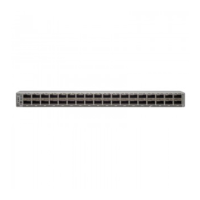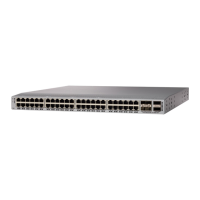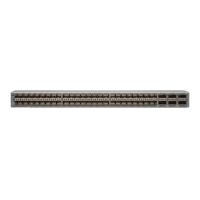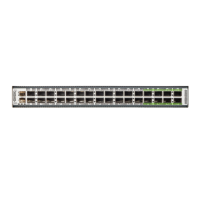Currently, this command does not verify IPv4 and IPv6 ACLs, does not verify on
subinterfaces, and does not verify if qualifiers and actions are matching.
Note
• show consistency-checker stp-state vlan vlan-id—Determines whether the spanning tree state in the
software is the same as programmed in the hardware. This command is run only on interfaces that are
operational (up).
Configuration Files
Configuration files contain the Cisco NX-OS commands used to configure the features on a Cisco NX-OS
device. Cisco NX-OS has two types of configuration files: running configuration and startup configuration.
The device uses the startup configuration (startup-config) during the device startup to configure the software
features. The running configuration (running-config) contains the current changes that you make to the
startup-configuration file. You should create a backup version of your configuration files before modifying
that configuration. You can back up the configuration files to a remote server. See the configuration file
information in the Cisco Nexus 9000 Series NX-OS Fundamentals Configuration Guide. You can also create
a checkpoint copy of the configuration file that you can roll back to if problems occur. See the rollback feature
in the Cisco Nexus 9000 Series NX-OS System Management Configuration Guide.
Cisco NX-OS features can create internal locks on the startup configuration file. In rare cases, these locks
might not be removed by the features. Use the system startup-config unlock command to remove these
locks.
CLI Debug
Cisco NX-OS supports an extensive debugging feature set for actively troubleshooting a network. Using the
CLI, you can enable debugging modes for each feature and view a real-time updated activity log of the control
protocol exchanges. Each log entry has a time stamp and is listed chronologically. You can limit access to
the debug feature through the CLI roles mechanism to partition access on a per-role basis. While the debug
commands show real-time information, you can use the show commands to list historical and real-time
information.
Use the debug commands only under the guidance of your Cisco technical support representative because
some debug commands can impact your network performance.
Caution
You can log debug messages to a special log file, which is more secure and easier to process than sending
the debug output to the console.
Note
By using the ? option, you can see the options that are available for any feature. A log entry is created for
each entered command in addition to the actual debug output. The debug output shows a time-stamped account
of the activity that occurred between the local device and other adjacent devices.
You can use the debug facility to track events, internal messages, and protocol errors. However, you should
be careful when using the debug utility in a production environment because some options might prevent
Cisco Nexus 9000 Series NX-OS Troubleshooting Guide, Release 7.x
95
Troubleshooting Tools and Methodology
Configuration Files
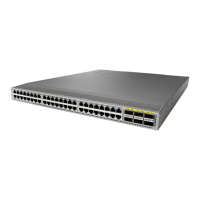
